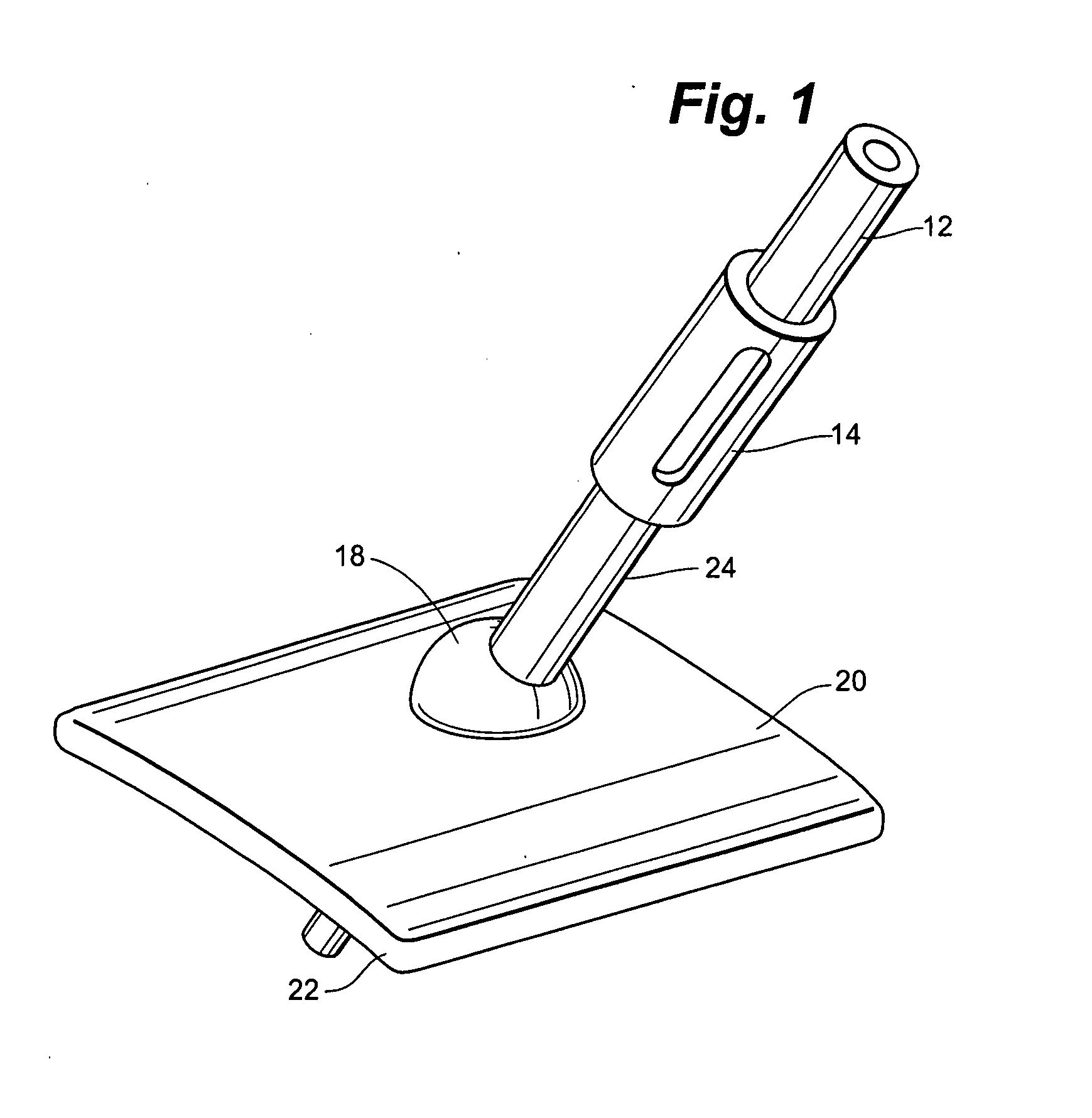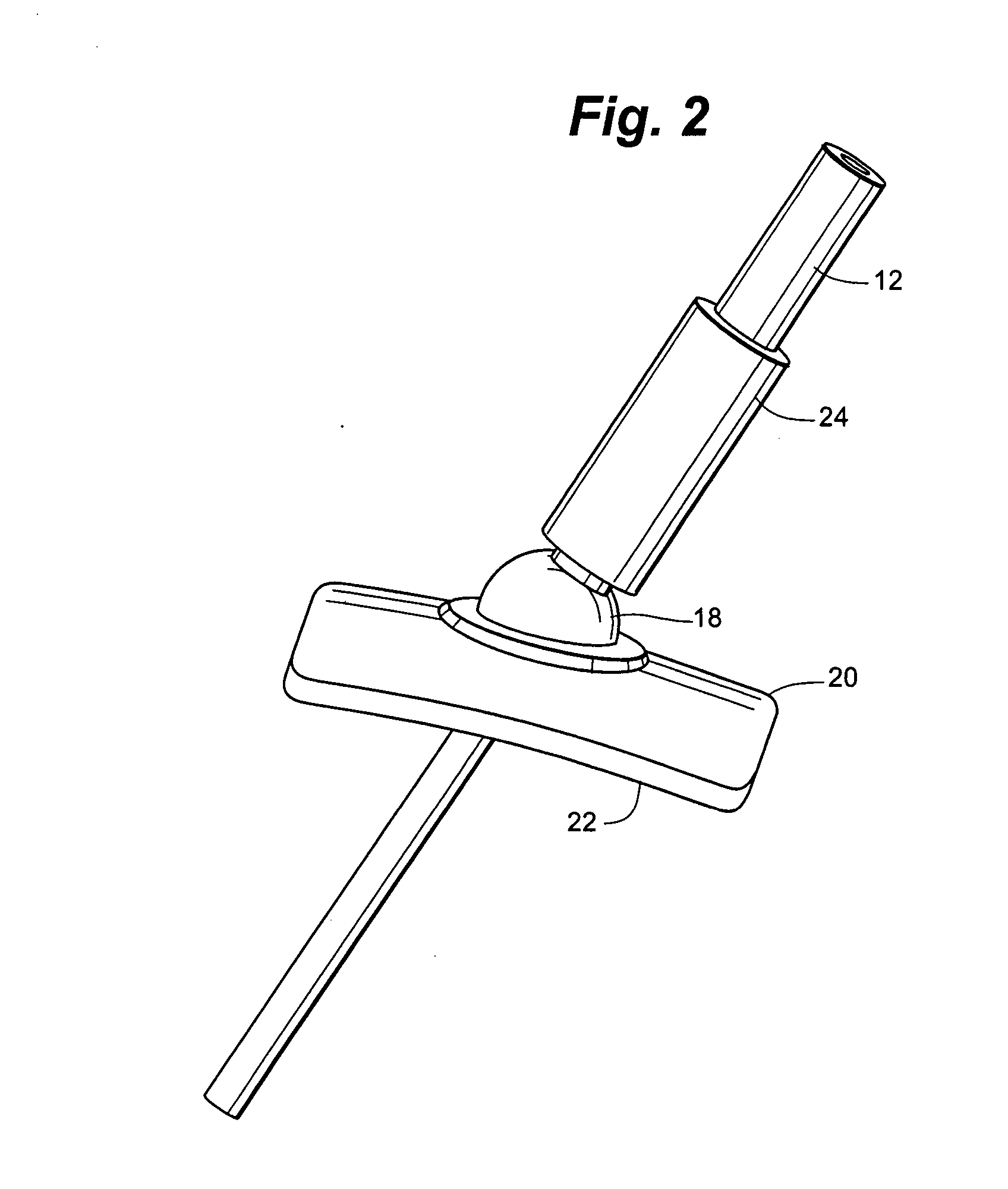Anchorless non-invasive force dissipation system for orthopedic instrumentation
a non-invasive force and orthopedic technology, applied in the field of anchorless non-invasive force dissipation system for orthopedic instruments, can solve the problems of collateral damage to other body structures or tissues, potential danger to patients, and non-invasive devices for alignment and force dissipation of orthopedic instruments,
- Summary
- Abstract
- Description
- Claims
- Application Information
AI Technical Summary
Benefits of technology
Problems solved by technology
Method used
Image
Examples
Embodiment Construction
[0025] The device of the present invention maintains the desired insertion trajectory of medical instruments and dissipates the force imparted by these same medical instruments by dispersing it over a relatively large area at the patient's skin surface. As is shown in FIG. 1, the device 10 comprises a base 20 and an interchangeable sheath component 24 attached to a freely positionable ball joint 18. The sheath 24 may be attached to any mechanism which is freely positionable in infinite degrees of freedom. The base 20 may be constructed to conform to the contours of the patient's body. The base 20 may be constructed of plastics, polymers, Kevlar® or any other suitable medical grade material. In a preferred embodiment, the base 20 is constructed of a polyetherimide, such as Ultem® plastic.
[0026] The base 20 is positioned directly on the patient, providing safety benefits over conventional systems. Because of the potential side effects of general anesthesia and other considerations, m...
PUM
 Login to View More
Login to View More Abstract
Description
Claims
Application Information
 Login to View More
Login to View More - R&D
- Intellectual Property
- Life Sciences
- Materials
- Tech Scout
- Unparalleled Data Quality
- Higher Quality Content
- 60% Fewer Hallucinations
Browse by: Latest US Patents, China's latest patents, Technical Efficacy Thesaurus, Application Domain, Technology Topic, Popular Technical Reports.
© 2025 PatSnap. All rights reserved.Legal|Privacy policy|Modern Slavery Act Transparency Statement|Sitemap|About US| Contact US: help@patsnap.com



